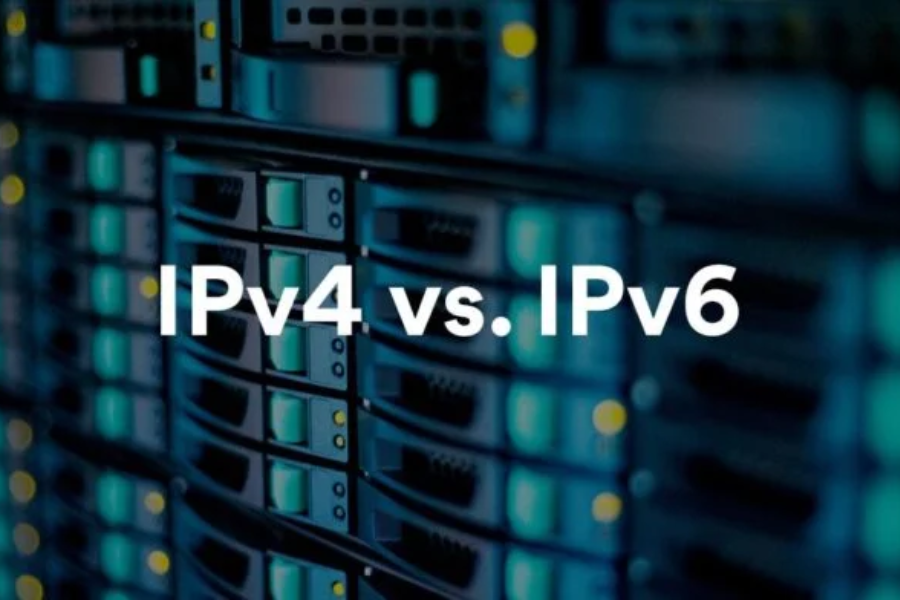In today’s digital landscape, grasping the distinct versions of Internet Protocol (IP) is crucial. As the number of connected devices continues to rise, recognizing the differences between IPv4 and IPv6 helps us understand the internet’s functionality and the necessity for change. This article delves into the intricacies of IPv4 and IPv6, comparing their features, advantages, and overall impact on users and industries.
What is IPv4?
Definition and History
IPv4, or Internet Protocol version 4, is the fourth iteration of the IP and remains the most widely used protocol today. Developed in the early 1980s, it continues to serve as the backbone of internet communication.
Structure of IPv4 Addresses
An IPv4 address is a 32-bit number typically represented in a dotted-decimal format, comprising four 8-bit fields separated by periods. For example: 192.168.0.1.
Examples of IPv4 Addresses
- 192.168.1.1
- 172.16.254.1
- 10.0.0.1
What is IPv6?
Definition and History
IPv6, or Internet Protocol version 6, is the latest version designed to address the limitations of IPv4, particularly the shortage of available addresses. It was developed in the late 1990s.
Structure of IPv6 Addresses
An IPv6 address is a 128-bit number represented in hexadecimal format, separated by colons. For instance: 2001:0db8:85a3:0000:0000:8a2e:0370:7334.
Examples of IPv6 Addresses
- 2001:0db8:85a3:0000:0000:8a2e:0370:7334
- fe80:0000:0000:0000:0202:b3ff:fe1e:8329
- 2001:0db8:0000:0042:0000:8a2e:0370:7334
Key Differences Between IPv4 and IPv6
Address Length
The most significant difference lies in address length: IPv4 uses 32 bits, while IPv6 employs 128 bits, resulting in much longer and more complex addresses.
Address Format
IPv4 addresses are formatted in decimal as four numbers separated by periods, whereas IPv6 addresses are formatted in hexadecimal as eight groups of four hex digits separated by colons.
Header Complexity
IPv4 features a more complex header with 12 fields, while IPv6 simplifies this to eight fields, enhancing processing efficiency.
Address Space and Scalability
IPv4 Address Limitations
IPv4 supports approximately 4.3 billion addresses, a number that seemed sufficient at its inception. However, with the explosion of internet-connected devices, this space has become inadequate.
IPv6 Address Expansion
In contrast, IPv6 offers an almost limitless address space, capable of accommodating 340 undecillion (3.4×10^38) addresses, ensuring scalability for future growth.
Security Features
IPv4 Security Mechanisms
IPv4 relies on external protocols like IPsec for security, which is optional and often inconsistently implemented.
IPv6 Enhanced Security
IPv6 incorporates IPsec by default, providing end-to-end encryption and integrity checks that enhance overall security.
Performance and Efficiency
IPv4 Performance
While IPv4 has been effective over the years, it faces challenges with routing efficiency and address depletion.
IPv6 Performance Improvements
IPv6 addresses these issues with improved routing performance, simplified packet processing, and the removal of Network Address Translation (NAT).
Transition from IPv4 to IPv6
Challenges in Transition
Transitioning from IPv4 to IPv6 is complex and involves compatibility issues, infrastructure upgrades, and cost considerations.
Transition Mechanisms
- Dual Stack: Running both IPv4 and IPv6 on devices simultaneously.
- Tunneling: Encapsulating IPv6 packets within IPv4 packets.
- Translation: Converting between IPv4 and IPv6 addresses.
Benefits of IPv6 Over IPv4
- Enhanced Routing: IPv6 reduces the size of routing tables and boosts routing efficiency.
- Simplified Network Configuration: IPv6 supports autoconfiguration, simplifying network management.
- Improved Multicast Routing: IPv6 enhances multicast routing capabilities, vital for multimedia applications.
IPv4 and IPv6 Coexistence
Current State of Coexistence
IPv4 and IPv6 currently coexist, with many networks utilizing both protocols. This dual-stack approach facilitates a gradual transition to IPv6.
Future Predictions
In the long term, IPv6 is expected to fully replace IPv4, although this process may take several years due to the extensive existing IPv4 infrastructure.
Use Cases of IPv4 and IPv6
Common Applications of IPv4
IPv4 continues to power most current internet applications, including web browsing, email, and file transfers.
Emerging Applications of IPv6
IPv6 is crucial for Internet of Things (IoT) applications, ensuring scalability and enabling new internet services.
Impact on End Users
How IPv4 Affects Users
IPv4’s limitations can lead to slower internet speeds and increased complexity in network management.
How IPv6 Will Change User Experience
IPv6 promises faster internet speeds, improved connectivity for smart devices, and simplified network configurations.
Industry Adoption
IPv4 Adoption in Various Industries
IPv4 remains prevalent across numerous sectors, including telecommunications and enterprise networks.
IPv6 Adoption and Industry Trends
Adoption of IPv6 is on the rise, especially in industries requiring robust and scalable networks, such as IoT and mobile telecommunications.
Government and Regulatory Support
Government Initiatives for IPv6
Many governments are promoting the transition to IPv6 through policies and incentives to ensure future-proof networks.
Regulatory Requirements
Certain regions have mandated IPv6 adoption for new networks, encouraging organizations to upgrade their infrastructure.
FAQs
Why do we need IPv6 when we have IPv4?
IPv4 addresses are running out, and IPv6 offers a significantly larger address space to accommodate ongoing internet growth.
Can IPv4 and IPv6 work together?
Yes, they can coexist using transition mechanisms such as dual stack, tunneling, and translation.
What are the main security enhancements in IPv6?
IPv6 includes IPsec by default, providing superior security through end-to-end encryption and integrity checks.
How does IPv6 improve internet performance?
IPv6 enhances routing efficiency, simplifies packet processing, and eliminates the need for NAT, leading to better overall performance.
Is the transition to IPv6 mandatory for all internet users?
While not mandatory for all users, transitioning to IPv6 is strongly recommended to ensure future compatibility and improved network performance.
Conclusion
Both IPv4 and IPv6 possess unique strengths and weaknesses, but the future clearly favors IPv6 due to its enhanced capabilities and scalability. Understanding the differences between these protocols helps us navigate the ongoing evolution of the internet and prepare for the changes ahead.
Discover in-depth features on the topics that matter at crock knot.





Leave a Reply